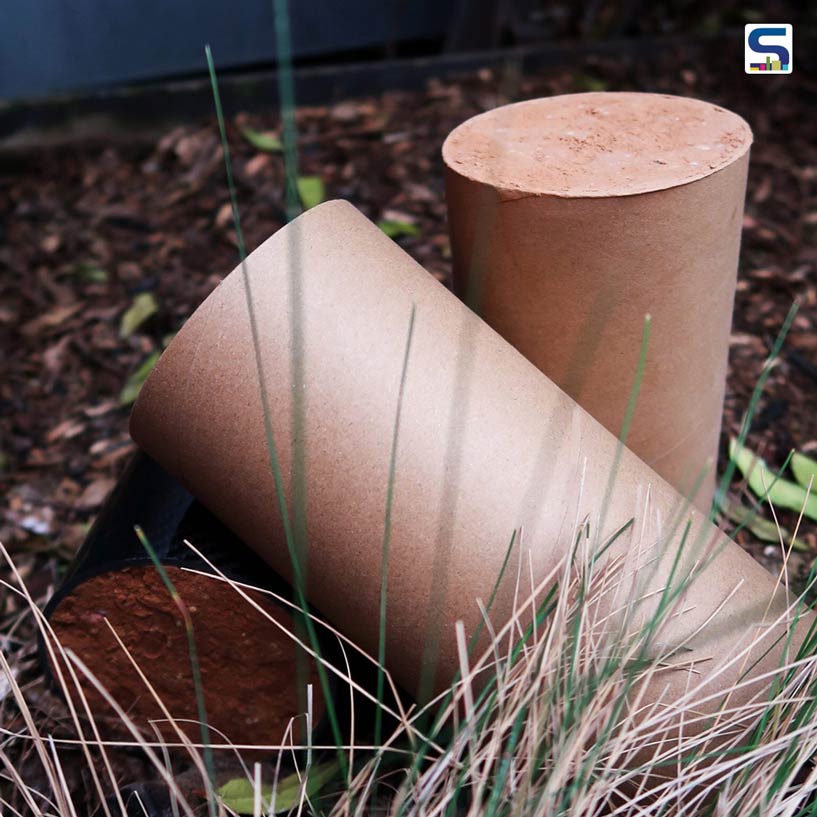
Researchers at the Royal Melbourne Institute of Technology (RMIT) in Australia recently unveiled a groundbreaking construction material that could significantly transform sustainable building practices. Their innovation combines rammed earth with cardboard, forming a hybrid material known as Cardboard-Confined Rammed Earth (CCRE). This inventive approach eliminates the need for cement, which is the most carbon-intensive ingredient in traditional construction. Additionally, it also offers a low-cost, low-carbon and thermally efficient solution ideal for low-rise and modular buildings. The findings, published in the journal Structures, reportedly indicate that the material could be ready for commercial testing within one to two years, thus marking an exciting advancement in eco-conscious architecture. Know how waste reduction, low-carbon construction and innovative material engineering can built a sustainable environment on SURFACES REPORTER (SR).
From waste to walls
Traditionally, rammed earth walls are made by compacting layers of soil mixed with about 8-10 per cent cement inside temporary formwork made of plywood or steel. Once the material stabilizes, the formwork is removed, leaving behind a dense and heavy earthen wall. While this process produces visually appealing and durable structures, the inclusion of cement offsets the environmental advantages of using natural materials. Cement production alone accounts for nearly 8 per cent of global CO2 emissions, making it one of the world’s most polluting industries. By replacing cement with recyclable cardboard formwork, RMIT’s team has taken a decisive step toward reducing the embodied carbon of building materials.
The CCRE system works by compacting soil within lightweight cardboard tubes that serve as permanent formwork. Unlike conventional moulds, these cardboard enclosures remain in place, providing continuous support to the rammed earth core. This dual-function design enhances the wall’s strength, minimizes cracking, and improves resistance to seismic stress. According to Dr Jiaming Ma, one of the study’s lead researchers, the combination of the two materials creates a synergy where the cardboard increases the rammed earth’s resistance to cracking or seismic forces, while the earth reinforces the cardboard’s compressive performance by more than tenfold.
A fusion of cardboard and Earth
Reportedly, the construction sector, largely dependent on concrete and steel, accounts for roughly 37 per cent of global CO2 emissions. At the same time, the world faces waste crisis driven by the rapid growth of e-commerce packaging. Reports suggest, in Australia alone, cardboard and paper made up 7.7 per cent of total waste in 2020 and 2021, with 2.2 million tons sent to landfills. RMIT’s CCRE technology directly addresses both issues by repurposing waste cardboard into a valuable construction material, creating a circular solution that benefits both the environment and the building industry.
Dr Ma credited the project’s conceptual inspiration to Japanese architect Shigeru Ban, renowned for his pioneering work with structural cardboard in architecture. Ban’s Cardboard Cathedral in Christchurch, New Zealand, demonstrated the strength, versatility and architectural potential of cardboard as a construction material. Building upon this precedent, the RMIT researchers envisioned a way to integrate the compressive strength of rammed earth with the flexibility and sustainability of cardboard, thereby resulting in an entirely new composite system.
To test their hypothesis, the RMIT team built small-scale prototypes of CCRE columns and walls. These tests measured the material’s mechanical strength, carbon footprint and life-cycle performance. Early results showed that CCRE’s compressive strength is comparable to cement-stabilised rammed earth, while achieving only about one-quarter of the embodied carbon of concrete. The researchers have also developed a related version that uses carbon-fibre confinement, achieving performance levels similar to high-performance concrete, further expanding the material’s potential applications.
In the future, the RMIT team plans to scale up the technology by constructing full-size CCRE columns and experimenting with alternative formwork geometries. Future prototypes may use foldable, origami-inspired cardboard moulds that can be shipped flat and easily assembled on-site. This could lead to customisable, modular construction systems that are not only efficient but also adaptable for disaster relief shelters, temporary housing and low-cost community buildings.
Image credit: RMIT